Despite their relatively high price tags, 5K monitors have garnered significant popularity among a variety of creative professionals, such as photographers, videographers, filmmakers, and graphic designers. In addition to delivering exceptionally sharp and detailed imagery, these displays are typically quite expansive in size and come equipped with high-end factory-calibrated panels to ensure precise color reproduction.
A genuine 5K resolution stands at 5120 x 2880 pixels, although many manufacturers primarily emphasize the horizontal pixel count. It’s worth noting that only a handful of monitors provide this exact resolution. Consequently, we’ve curated a selection of the top monitors that offer a 5K2K resolution (5120 x 2160 pixels) as well. Presented below are the finest 5K monitors available for purchase in 2023.
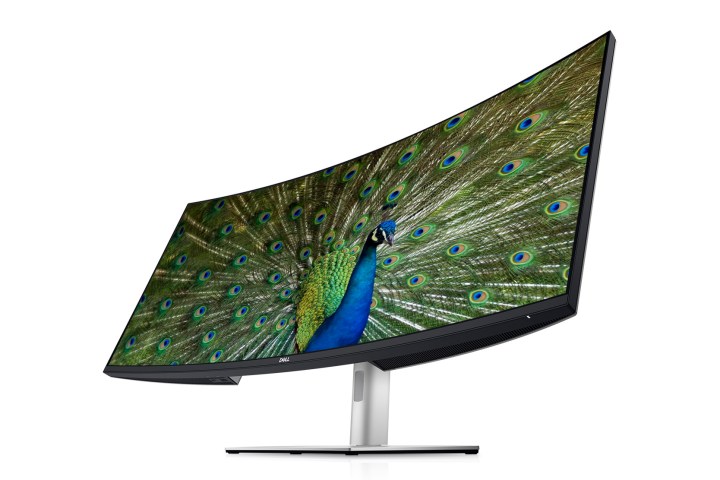
Image used with permission by copyright holder
Dell UltraSharp U4021QW
Best 5K monitor with built-in USB hub
Pros
- Excellent color reproduction
- KVM switch
- Built-in USB hub
- USB-C with 90 watts power delivery
Cons
- No HDR support
- Edges are not uniform
- Low contrast ratio
Why you should buy this: It is one of the best 40-inch curved ultrawide monitors with a 5K resolution.
Who’s it for: Content creators as well as office professionals who care about productivity and multitasking.
Why we chose the Dell UltraSharp U4021QW:
The Dell UltraSharp U4021QW was one of the first monitors with a 40-inch curved 5K 2K resolution panel when it launched in early 2021, and it is one of the best in the business. The ultrawide (21:9 aspect ratio) nature of the monitor allows for stacking up to three windows easily while the 2500R curvature should eliminate any off-axis color shift.
With a focus on delivering maximum productivity at your workplace, the monitor is suitable for creative professionals as it comes with a color-accurate 10-bit panel that is rated for 100% sRGB, 98% DCI-P3 color gamut coverage, and a Delta E <2.
The monitor is pretty loaded on the connectivity front, including a DisplayPort 1.4, two HDMI 2.0 ports, a Thunderbolt 3 port, a host of USB ports with power delivery options, an RJ45 Ethernet jack, and a 3.5mm jack for audio. The monitor also comes with integrated dual nine-watt speakers, low-blue light emission, MAC address pass-through, Wake-on-LAN, and various preset color modes, as well as Picture-in-Picture (PIP) and Picture-by-Picture (PBP) modes. Additionally, the monitor comes with a KVM switch that allows controlling more than one PC using a single keyboard and mouse.

Dell UltraSharp U4021QW
Best 5K monitor with built-in USB hub

LG
LG UltraWide 40WP95C-W
Best ultrawide 5K monitor
Pros
- Excellent color coverage
- Support for HDR10
- Thunderbolt 4 connectivity
- 72Hz refresh rate with FreeSync
- Daisy chain capable
Cons
- Low brightness in HDR
- Weak contrast levels
Why you should buy this: One of the best 5K ultrawide monitors suitable for a variety of users.
Who’s it for: Those who need a 5K monitor with multiple-use cases, including content creation, multitasking, and even some gaming at high resolutions.
Why we chose the LG UltraWide 40WP95C-W:
The LG UltraWide 40WP95C-W might seem similar to the Dell UltraSharp U4021QW, but overall it is a better monitor. It supports HDR (which the Dell does not), a higher refresh rate (72Hz vs. 60Hz), and support for Thunderbolt 4 for faster bandwidth. It is also currently selling at a comparatively cheaper price.
The monitor is an excellent choice for media creation thanks to its high-resolution and wide color gamut coverage, while the large size is great for office productivity. It uses a Nano IPS panel with a 5120×2160 pixels resolution, 98% coverage of the DCI-P3 spectrum for accurate color, and it is hardware calibration-ready in case you want to tinker with the settings. As mentioned before, there is support for HDR10 and while it should look good, you do need to consider that there are no local dimming zones, so it isn’t extremely bright and the contrast levels are low.
The LG UltraWide 40WP95C-W can also be used for gaming. It comes with AMD FreeSync, up to 5ms (GtG) response time, and while the 72Hz refresh isn’t comparable to most gaming monitors it’s still 20% faster than your average 60Hz display. The sheer resolution makes it perfect for games that focus on visual elements rather than fast-paced action, too.
Other notable features include built-in 10-watt speakers, Dynamic Action Sync to reduce input lag, auto-brightness with ambient light sensor, low blue light filter mode, and support for daisy-chaining multiple monitors at 5K resolution. Connectivity options include two Thunderbolt 4 ports, a DisplayPort, two HDMI ports, a 3.5mm audio jack, and two USB 3.0 Type-A ports.

LG UltraWide 40WP95C-W
Best ultrawide 5K monitor
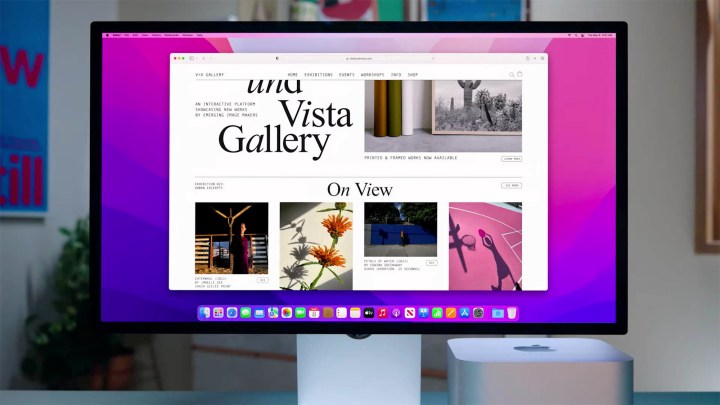
Image used with permission by copyright holder
Apple Studio Display
Best display for Mac ecosystem
Pros
- High pixel density
- Wide viewing angles
- Color accurate panel
- Great speakers and microphone
Why you should buy this: The most premium 27-inch monitor with 5K resolution.
Who’s it for: For those who swear by the Apple ecosystem, especially the ones who need a high-resolution display for content creation.
Why we chose the Apple Studio Display:
Apple’s Studio Display is the company’s second-ever external display meant for creative professionals and a more affordable option compared to the Pro Display XDR. It features a 27-inch 5K Retina display, with a pixel density of 218 pixels per inch, up to 600 nits of brightness, and supports DCI-P3 color. Notably, the panel does not support HDR. It is available with a swivel mount that offers up to 30 degrees of swivel or you can pay $400 extra for a height-and-swivel mount.
The monitor also features a high-quality six-speaker system, including four force-canceling woofers for bass and two tweeters that amplify the mid and high tones. The speakers also offer Dolby Atmos virtual spatial audio making the Studio Display the best monitor with built-in speakers. There is also a built-in 12-megapixel ultrawide camera paired with three microphones with noise-canceling so you can easily make video calls. The camera supports Apple Center Stage, which can automatically track and place you in the center of the frame. As for connectivity, the Studio Display comes with a Thunderbolt 3 upstream port that supports up to 96 watts of power for charging and three downstream USB-C ports.
Considering the feature set, the Apple Studio Display doesn’t sound as worthy as the Pro Display XDR, especially since LG’s Ultrafine 27MD5KL-B offers similar features at a more affordable price, but it’s still healthy competition in a space that doesn’t have a wealth of options.
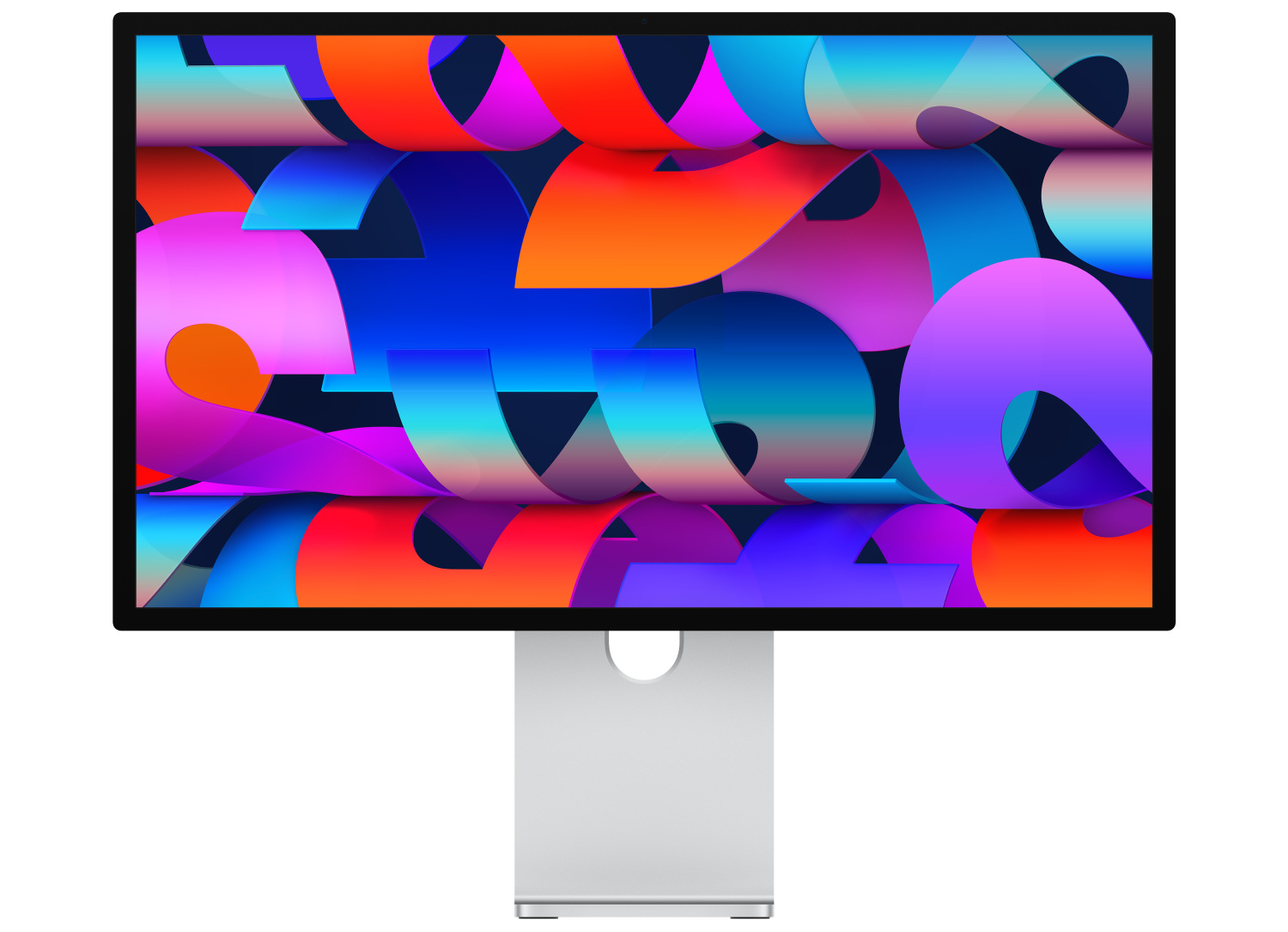
Apple Studio Display
Best display for Mac ecosystem
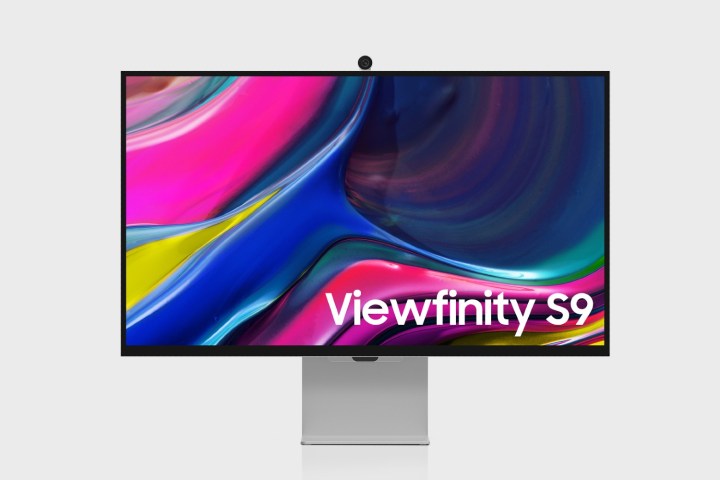
Samsung
Samsung ViewFinity S9
Most feature packed 5K monitor
Pros
- Solid alternative to the Apple Studio Display
- Great viewing angles
- Detachable 4K camera
- Wireless connectivity options
- Built-in smart features
Cons
- No power button on the display
- External power adapter
- Build quality could be better
Why you should buy this: A solid competitor to the Apple Studio Display packing excellent features.
Who’s it for: Anyone who is looking for premium 5K monitor with wide connectivity and smart features.
Why we chose the Samsung ViewFinity S9:
Launched earlier this year, the ViewFinity S9 is Samsung’s answer to the Apple Studio Display. It can everything that the Apple Studio Monitor can, along with a bunch of creature comforts. It even comes with a similar minimalistic industrial design and a 27-inch IPS panel with a 5120 x 2880 pixels resolution. The display on the monitor is claimed to offer up to 600 nits brightness with HDR600 certification and covers 99% of DCI-P3 color gamut for a bright, vivid and color accurate experience making it suitable for professional workflows.
The monitor also comes with a detachable 4K camera and built-in 5W speakers making is great for quick video calls. It even has impressive connectivity options with a Thunderbolt 4 port, three USB-C ports, a mini-DisplayPort as well as wireless options like built in Wi-Fi 5, Bluetooth 4.2 and AirPlay.
The ViewFinity goes beyond regular monitors thanks to its slew of additional features. Some of them include multiview (split screen), support for Samsung DeX, a bundled remote control, and Tizen TV OS. Essentially the monitor can double as a multimedia hub as one has access to a range of apps including video streaming services like YouTube, Netflix, Disney+, and more.
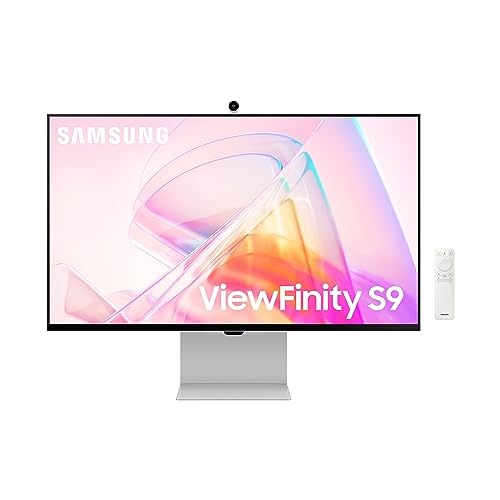
Samsung ViewFinity S9
Most feature packed 5K monitor

Julian Chokkattu/Digital Trends
Apple Pro Display XDR
Best pro-grade 5K monitor
Pros
- Extremely bright
- High contrast ratio
- Premium design
- Sharp picture quality
- Excellent color coverage
Cons
- Way too expensive
- Stand costs extra $1,000
- Limited connectivity
Why you should buy this: It is the best high-resolution monitor that you can buy for your Mac ecosystem.
Who’s it for: Professional content creators who are looking for the highest quality monitor that is comparable to more expensive reference monitors.
Why we chose the Apple Pro Display XDR:
Apple’s flagship monitor comes at a hefty starting price of $4,999, but there are good reasons for that. First of all, it is the best monitor that Apple has ever made. The 32-inch IPS panel on this monitor offers an impressive 6K resolution (6016×3384-pixels) at 60Hz for a total of 218 pixels per inch, giving you more pixels than a standard 5K monitor without compromising on the sharpness. The Pro Display XDR is comparable to some of the best pro-quality reference monitors that are usually priced at over $30,000.
The highlight feature of this monitor is XDR which stands for Extreme Dynamic Range, which is a step beyond HDR (High Dynamic Range). The monitor is capable of 1,000 nits of sustained brightness, 1,600 nits of burst brightness, and a 1,000,000:1 contrast ratio. This makes it 60% brighter than the VESA DisplayHDR 1000 standard, which requires only 600 nits of sustained brightness and 1,000 nits of burst brightness.
The monitor also features a redesigned LED backlighting to achieve an impressive contrast ratio, which is usually seen on premium OLED TVs. Instead of using white LEDs, Apple uses an array of 576 blue LEDs to boost the brightness and a timing controller to control and modulate each LED depending on the content. The timing controller can go up to ten times the refresh rate of the LCD itself to reduce latency. Additionally, the rear of the monitor is equipped with a perforated pattern, called lattice design, to act as a heat sink and double the surface area for cooling. This allows the display to operate on 1,000 nits of brightness indefinitely.
It is also rated for over 98% of the DCI-P3 color gamut coverage, while the 10-bit depth ensures support for over a billion colors. In a true Apple sense, you get limited ports including a single Thunderbolt 3 (USB-C) port with three additional USB-C ports. Do note that this monitor does not come with a stand, so you can either buy your own that is compatible with VESA 100x100mm or invest another $1,000 for Apple’s Pro Stand.

Apple Pro Display XDR
Best pro-grade 5K monitor

Image used with permission by copyright holder
LG Ultrafine 27MD5KL-B
Best value for money 5K monitor
Pros
- High pixel density of 218 pixels per inch
- Built-in webcam, mic, and speakers
- Strong build quality
- Designed for use with the MacBook Pro
Cons
- Thick bezels
- No hardware buttons (not even power)
Why you should buy this: It is the best 27-inch monitor that you can get with a 5K resolution.
Who’s it for: Those who want a fuss-free 27-inch monitor that is capable of handling sharp and high-resolution imagery.
Why we chose the LG Ultrafine 5K 27MD5KL-B:
A refreshed version of the original LG Ultrafine 5K (27MD5KA-B), is currently selling for less than $1,000. It was designed as a collaboration between Apple and LG, specifically as a companion for the MacBook Pro. In fact, the new Studio Display by Apple seems to offer the same features as the LG Ultrafine 5K but with an updated design. The IPS panel on this monitor comes with 10-bit color support, 99% coverage of DCI-P3 99%, and up to 500 nits of brightness making it color accurate and delivering ample vibrancy.
The build quality of the monitor is quite robust, but overall, the design looks dated with bezels that are thicker (especially the top one) than most modern monitors. Strangely, there are no controls or any sort of buttons for menu, brightness controls, volume, or even a power button, all of which have been sacrificed for the sake of simplicity.
There are no traditional DisplayPort or HDMI ports on this monitor either; instead, you get three USB-C ports and a Thunderbolt 3 port that allows for a single cable connection for video and power delivery (up to 85 watts) to your laptop. The monitor does, however, feature a built-in webcam, microphone, and speakers, which is pretty neat.
The LG Ultrafine 27MD5KL-B is thus a great monitor for MacBook users who are looking for a sharp 5K monitor at a fairly affordable price, at the same time, prioritize simplicity when it comes to connectivity and cable management. If you are planning to use this monitor with a Windows PC, make sure it has a certified Thunderbolt 3/4 port and a cable that offers the same protocol.

LG Ultrafine 27MD5KL-B
Best value for money 5K monitor
Frequently Asked Questions
What is a 5K monitor?
A 5K monitor is a type of high-resolution display that provides high level of visual detail and clarity. The “5K” designation refers to the monitor’s horizontal pixel count, which is approximately 5,000 pixels. While the exact resolution can vary slightly depending on the manufacturer and model, a typical 5K monitor has a resolution of 5,120 x 2,880 pixels.
These monitors offer significantly more pixels than the more common 4K monitors, which have a resolution of 3,840 x 2,160 pixels. As a result, 5K monitors provide even sharper and more detailed images. They are especially popular among professionals in creative fields like photography, video editing, graphic design, and film production, as the increased resolution allows for precise editing, color accuracy, and the ability to work with high-resolution content.
5K monitors are known for their ability to display content in stunning detail and are often used for tasks that demand exceptional image quality and clarity. They can be beneficial for tasks such as photo and video editing, 3D modeling, and tasks where fine details are essential.
Is a 5K monitor suitable for me?
A 5K monitor is typically sought after by professionals and individuals who require or greatly benefit from exceptionally high-resolution displays and precise image quality. Here are some of the key groups of people who may find a 5K monitor essential or highly advantageous:
- Photographers: Photographers working with high-resolution images, especially in fields like landscape or architectural photography, can benefit from a 5K monitor to view and edit their work with exceptional detail and color accuracy.
- Video Editors: Video editors, especially those working on 4K or 8K video content, can take advantage of a 5K monitor to edit and color grade footage accurately, as it provides ample screen real estate and pixel density for precise work.
- Graphic Designers: Graphic designers who create detailed graphics, illustrations, and print materials benefit from the enhanced clarity and color accuracy offered by 5K monitors.
- 3D Modelers and Animators: Professionals working with 3D modeling and animation software often use 5K monitors to view intricate 3D models and scenes with high fidelity.
- Film and Animation Industry: Those in the film and animation industry require high-resolution displays to review and edit cinematic content. A 5K monitor is a valuable tool for these tasks.
- Architects and CAD Designers: Architects and CAD designers working on detailed architectural plans and engineering drawings can benefit from the extra screen space and resolution.
- Scientific and Medical Imaging: Professionals dealing with medical imaging, scientific visualization, or other data-intensive fields often require high-resolution monitors for precise analysis.
- Gaming Enthusiasts: While not primarily designed for gaming, some gaming enthusiasts may opt for 5K monitors to experience games with exceptional visual fidelity. However, high-end gaming rigs are necessary to run games smoothly at such high resolutions.
- Multitaskers: Even non-professionals who engage in multitasking, run multiple applications side by side, or use their computer for a variety of tasks may appreciate the extra screen real estate and clarity that a 5K monitor provides.
Why are 5K monitors expensive?
5K monitors are expensive for several reasons, including the technology and features they offer. Here are some factors that contribute to the higher cost of 5K monitors:
- High resolution: 5K monitors have significantly more pixels than standard displays, which requires more advanced and precise manufacturing processes. The higher pixel count results in sharper and more detailed images, making them ideal for professional applications.
- Specialized use: 5K monitors are often designed for professional use in fields such as photography, video editing, graphic design, and 3D modeling. These professionals require precise color accuracy and image detail, which demands higher-quality components and calibration.
- Panel technology: Many 5K monitors use premium panel technologies like In-Plane Switching (IPS) or Organic Light-Emitting Diode (OLED) for better color accuracy, wider viewing angles, and superior image quality. These panels are more expensive to manufacture.
- Factory calibration: To meet the needs of professionals, 5K monitors are often factory-calibrated to ensure accurate color representation. This calibration process adds to the cost.
- Large Screen sizes: Many 5K monitors come in larger screen sizes, which require more materials and are more costly to produce.
- Additional features: High-end 5K monitors often come with extra features like USB-C connectivity, multiple input options, adjustable stands, and advanced image processing capabilities, further increasing the cost.
- Limited market: 5K monitors are not as common as lower-resolution displays (such as 4K or 1080p), which means that they may have a smaller market share. This limited demand can drive prices up due to economies of scale.
- Research and development: The development of higher-resolution monitors, especially with advanced features, requires research and development investments that are reflected in the final product’s cost.
- Brand and build quality: Well-known and reputable brands tend to charge a premium for their monitors, reflecting not only the quality of the product but also the assurance of after-sales support and warranty coverage.
Editors’ Recommendations
Credit: Source link


Comments are closed.